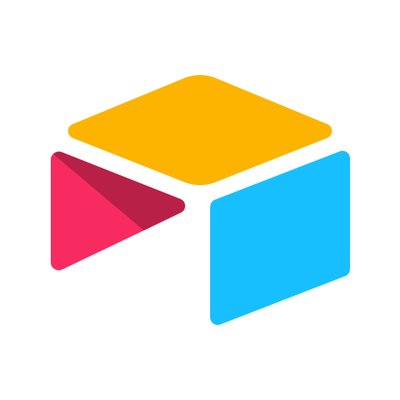Asana is one of the best tools for task & project management, but small teams may find it

- Services
- Resources
- More
- Store
TLDR
Insights
Asana is one of the best tools for task & project management, but small teams may find it
overwhelming. The free plan is solid, but advanced features like reporting and automation
require paid tiers. Can be overkill if you just need simple task tracking.
✅ Excellent for structured project workflows
✅ Seamless integrations with Google Workspace & Slack
⚠ Learning curve for first-time users
⚠ Can feel bloated for basic task management
Launchpoint Take: If your team thrives on structured task workflows, Asana is a powerhouse. If
you need something simpler, look at Trello or ClickUp.
Key Insights & Findings
Pricing & Accessibility
● Freemium vs. Paid Plans: Many users feel that Asana’s free plan is generous but lacks
essential features like timeline views, advanced reporting, and automation.
● High Cost for Small Teams: Some smaller teams and startups find the pricing steep
compared to competitors like ClickUp and Monday.com.
● Enterprise Pricing Transparency: Users mention that enterprise pricing isn’t transparent,
requiring direct contact with sales, which can be frustrating.
Ease of Use & Learning Curve
● Initial Setup Challenges: New users struggle with setting up workflows efficiently without
prior experience.
● Feature Overload: Some users feel overwhelmed by the vast number of tools and
options available.
● Lack of Comprehensive Tutorials: Asana provides guides, but users wish for more
step-by-step onboarding content.
Integration Strengths
● Seamless with Google Workspace & Slack: Users highly appreciate how well Asana
integrates with Google Drive, Slack, and Zoom.
● API & Zapier Use: Many tech-savvy users create custom automation via Zapier or
Asana's API, making workflows more streamlined.
● Strong Native Integrations: Compared to some competitors, Asana offers more built-in
integrations rather than relying solely on third-party services.
User Experience & Common Concerns
● Intuitive for experienced users who are familiar with project management tools.
● Strong automation and workflow rules for efficient project tracking.
● Overwhelming for first-time users who struggle to navigate the platform efficiently.
● Mobile app not as full-featured as the desktop version.
Alternative Competitors Mentioned
● ClickUp – More customization and automation for a lower price.
● Monday.com – More visually appealing dashboards with better customization options.
● Trello – Simpler, Kanban-focused alternative for smaller teams.
● Notion – A flexible document-based alternative for teams who prefer a mix of project
management and knowledge-sharing.
Strengths
✅ Task Management Excellence – Helps teams organize, assign, and track tasks effectively.
✅ Collaboration & Visibility – Teams can work together seamlessly, reducing
miscommunication.
✅ Automation & Workflow Features – Users appreciate the custom workflows and rules-based
automation.
✅ Robust Integrations – Syncs easily with most major productivity tools.
Common Criticisms
⚠ Limited customization in lower-tier plans.
⚠ Customer support delays reported by some users.
⚠ Steep learning curve requiring dedicated onboarding and training.
Key Features
✔ Multi-Channel Automation – Automate workflows for task assignments, approvals, and
recurring projects. Set up trigger-based actions to streamline manual processes.
✔ Segmentation Capabilities – Custom fields and tags allow teams to categorize and filter tasks
dynamically. User roles and access levels help segregate responsibilities within teams.
✔ Pre-Built Automation Flows – Templates for project tracking, product launches, and
marketing campaigns. Automated rules allow for task reassignment, deadline adjustments, and
follow-up reminders.
✔ Integrations – Supports Slack, Google Drive, Zoom, Microsoft Teams, and Zapier for
enhanced connectivity. Developers can leverage the API to build custom integrations.
✔ AI-Powered Features – Smart project tracking and recommendations to optimize workflow
efficiency. AI-generated suggestions for task prioritization based on team activity.
✔ Reporting & Analytics – Custom dashboards and reports provide visibility into productivity
and progress. Real-time tracking helps leaders monitor workload distribution.
Conclusion
Who Should Use This Product?
✅ Project managers, team leaders, and cross-functional teams looking for structured task
management.
✅ Companies needing seamless integrations with Google Workspace, Slack, and other tools.
✅ Businesses prioritizing collaboration and transparency across multiple departments.
Who Should Consider an Alternative?
⚠ Small teams on a budget who may find ClickUp or Trello more cost-effective.
⚠ Users needing extreme customization, as Asana has some limitations.
⚠ Individuals looking for a simple, minimalist to-do list tool, as Asana can feel too complex.
Final Verdict
Asana is a powerful, feature-rich project management tool that excels at task collaboration,
automation, and reporting. It is best suited for teams and businesses that need structured
workflows and seamless integrations with existing tools. However, its learning curve, pricing,
and notification management could be improved to make it more accessible to a broader
audience.
Key Features
Asana is one of the best tools for task & project management, but small teams may find it
overwhelming. The free plan is solid, but advanced features like reporting and automation
require paid tiers. Can be overkill if you just need simple task tracking.
✅ Excellent for structured project workflows
✅ Seamless integrations with Google Workspace & Slack
⚠ Learning curve for first-time users
⚠ Can feel bloated for basic task management
Launchpoint Take: If your team thrives on structured task workflows, Asana is a powerhouse. If
you need something simpler, look at Trello or ClickUp.
Key Insights & Findings
Pricing & Accessibility
● Freemium vs. Paid Plans: Many users feel that Asana’s free plan is generous but lacks
essential features like timeline views, advanced reporting, and automation.
● High Cost for Small Teams: Some smaller teams and startups find the pricing steep
compared to competitors like ClickUp and Monday.com.
● Enterprise Pricing Transparency: Users mention that enterprise pricing isn’t transparent,
requiring direct contact with sales, which can be frustrating.
Ease of Use & Learning Curve
● Initial Setup Challenges: New users struggle with setting up workflows efficiently without
prior experience.
● Feature Overload: Some users feel overwhelmed by the vast number of tools and
options available.
● Lack of Comprehensive Tutorials: Asana provides guides, but users wish for more
step-by-step onboarding content.
Integration Strengths
● Seamless with Google Workspace & Slack: Users highly appreciate how well Asana
integrates with Google Drive, Slack, and Zoom.
● API & Zapier Use: Many tech-savvy users create custom automation via Zapier or
Asana's API, making workflows more streamlined.
● Strong Native Integrations: Compared to some competitors, Asana offers more built-in
integrations rather than relying solely on third-party services.
User Experience & Common Concerns
● Intuitive for experienced users who are familiar with project management tools.
● Strong automation and workflow rules for efficient project tracking.
● Overwhelming for first-time users who struggle to navigate the platform efficiently.
● Mobile app not as full-featured as the desktop version.
Alternative Competitors Mentioned
● ClickUp – More customization and automation for a lower price.
● Monday.com – More visually appealing dashboards with better customization options.
● Trello – Simpler, Kanban-focused alternative for smaller teams.
● Notion – A flexible document-based alternative for teams who prefer a mix of project
management and knowledge-sharing.
Strengths
✅ Task Management Excellence – Helps teams organize, assign, and track tasks effectively.
✅ Collaboration & Visibility – Teams can work together seamlessly, reducing
miscommunication.
✅ Automation & Workflow Features – Users appreciate the custom workflows and rules-based
automation.
✅ Robust Integrations – Syncs easily with most major productivity tools.
Common Criticisms
⚠ Limited customization in lower-tier plans.
⚠ Customer support delays reported by some users.
⚠ Steep learning curve requiring dedicated onboarding and training.
Key Features
✔ Multi-Channel Automation – Automate workflows for task assignments, approvals, and
recurring projects. Set up trigger-based actions to streamline manual processes.
✔ Segmentation Capabilities – Custom fields and tags allow teams to categorize and filter tasks
dynamically. User roles and access levels help segregate responsibilities within teams.
✔ Pre-Built Automation Flows – Templates for project tracking, product launches, and
marketing campaigns. Automated rules allow for task reassignment, deadline adjustments, and
follow-up reminders.
✔ Integrations – Supports Slack, Google Drive, Zoom, Microsoft Teams, and Zapier for
enhanced connectivity. Developers can leverage the API to build custom integrations.
✔ AI-Powered Features – Smart project tracking and recommendations to optimize workflow
efficiency. AI-generated suggestions for task prioritization based on team activity.
✔ Reporting & Analytics – Custom dashboards and reports provide visibility into productivity
and progress. Real-time tracking helps leaders monitor workload distribution.
Conclusion
Who Should Use This Product?
✅ Project managers, team leaders, and cross-functional teams looking for structured task
management.
✅ Companies needing seamless integrations with Google Workspace, Slack, and other tools.
✅ Businesses prioritizing collaboration and transparency across multiple departments.
Who Should Consider an Alternative?
⚠ Small teams on a budget who may find ClickUp or Trello more cost-effective.
⚠ Users needing extreme customization, as Asana has some limitations.
⚠ Individuals looking for a simple, minimalist to-do list tool, as Asana can feel too complex.
Final Verdict
Asana is a powerful, feature-rich project management tool that excels at task collaboration,
automation, and reporting. It is best suited for teams and businesses that need structured
workflows and seamless integrations with existing tools. However, its learning curve, pricing,
and notification management could be improved to make it more accessible to a broader
audience.
Conclusion
Asana is one of the best tools for task & project management, but small teams may find it
overwhelming. The free plan is solid, but advanced features like reporting and automation
require paid tiers. Can be overkill if you just need simple task tracking.
✅ Excellent for structured project workflows
✅ Seamless integrations with Google Workspace & Slack
⚠ Learning curve for first-time users
⚠ Can feel bloated for basic task management
Launchpoint Take: If your team thrives on structured task workflows, Asana is a powerhouse. If
you need something simpler, look at Trello or ClickUp.
Key Insights & Findings
Pricing & Accessibility
● Freemium vs. Paid Plans: Many users feel that Asana’s free plan is generous but lacks
essential features like timeline views, advanced reporting, and automation.
● High Cost for Small Teams: Some smaller teams and startups find the pricing steep
compared to competitors like ClickUp and Monday.com.
● Enterprise Pricing Transparency: Users mention that enterprise pricing isn’t transparent,
requiring direct contact with sales, which can be frustrating.
Ease of Use & Learning Curve
● Initial Setup Challenges: New users struggle with setting up workflows efficiently without
prior experience.
● Feature Overload: Some users feel overwhelmed by the vast number of tools and
options available.
● Lack of Comprehensive Tutorials: Asana provides guides, but users wish for more
step-by-step onboarding content.
Integration Strengths
● Seamless with Google Workspace & Slack: Users highly appreciate how well Asana
integrates with Google Drive, Slack, and Zoom.
● API & Zapier Use: Many tech-savvy users create custom automation via Zapier or
Asana's API, making workflows more streamlined.
● Strong Native Integrations: Compared to some competitors, Asana offers more built-in
integrations rather than relying solely on third-party services.
User Experience & Common Concerns
● Intuitive for experienced users who are familiar with project management tools.
● Strong automation and workflow rules for efficient project tracking.
● Overwhelming for first-time users who struggle to navigate the platform efficiently.
● Mobile app not as full-featured as the desktop version.
Alternative Competitors Mentioned
● ClickUp – More customization and automation for a lower price.
● Monday.com – More visually appealing dashboards with better customization options.
● Trello – Simpler, Kanban-focused alternative for smaller teams.
● Notion – A flexible document-based alternative for teams who prefer a mix of project
management and knowledge-sharing.
Strengths
✅ Task Management Excellence – Helps teams organize, assign, and track tasks effectively.
✅ Collaboration & Visibility – Teams can work together seamlessly, reducing
miscommunication.
✅ Automation & Workflow Features – Users appreciate the custom workflows and rules-based
automation.
✅ Robust Integrations – Syncs easily with most major productivity tools.
Common Criticisms
⚠ Limited customization in lower-tier plans.
⚠ Customer support delays reported by some users.
⚠ Steep learning curve requiring dedicated onboarding and training.
Key Features
✔ Multi-Channel Automation – Automate workflows for task assignments, approvals, and
recurring projects. Set up trigger-based actions to streamline manual processes.
✔ Segmentation Capabilities – Custom fields and tags allow teams to categorize and filter tasks
dynamically. User roles and access levels help segregate responsibilities within teams.
✔ Pre-Built Automation Flows – Templates for project tracking, product launches, and
marketing campaigns. Automated rules allow for task reassignment, deadline adjustments, and
follow-up reminders.
✔ Integrations – Supports Slack, Google Drive, Zoom, Microsoft Teams, and Zapier for
enhanced connectivity. Developers can leverage the API to build custom integrations.
✔ AI-Powered Features – Smart project tracking and recommendations to optimize workflow
efficiency. AI-generated suggestions for task prioritization based on team activity.
✔ Reporting & Analytics – Custom dashboards and reports provide visibility into productivity
and progress. Real-time tracking helps leaders monitor workload distribution.
Conclusion
Who Should Use This Product?
✅ Project managers, team leaders, and cross-functional teams looking for structured task
management.
✅ Companies needing seamless integrations with Google Workspace, Slack, and other tools.
✅ Businesses prioritizing collaboration and transparency across multiple departments.
Who Should Consider an Alternative?
⚠ Small teams on a budget who may find ClickUp or Trello more cost-effective.
⚠ Users needing extreme customization, as Asana has some limitations.
⚠ Individuals looking for a simple, minimalist to-do list tool, as Asana can feel too complex.
Final Verdict
Asana is a powerful, feature-rich project management tool that excels at task collaboration,
automation, and reporting. It is best suited for teams and businesses that need structured
workflows and seamless integrations with existing tools. However, its learning curve, pricing,
and notification management could be improved to make it more accessible to a broader
audience.

 Talk to Launchpoint Expert
Talk to Launchpoint Expert 




 Talk to an Expert
Talk to an Expert